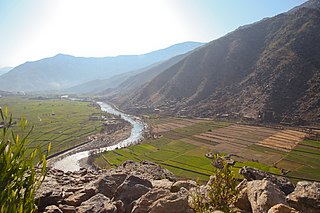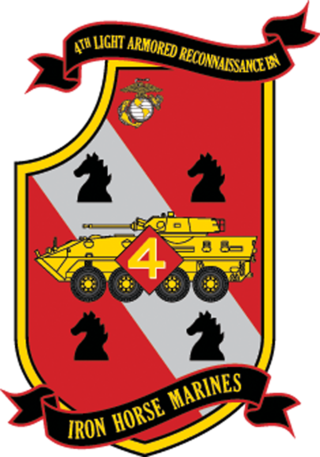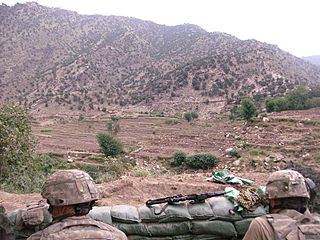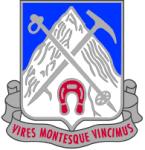Background
Elements of the 2nd Battalion, 22nd Infantry Regiment (2–22 IN), 10th Mountain Division (Light Infantry), were relocated to Bagram Airfield (BAF) from Kandahar in early November, 2003. Their mission was to conduct combat operations in conjunction with the Combined Joint Special Operations Task Force (CJSOTF). After spending a week in the planning process, Alpha, Bravo and 2nd Platoon of Charlie Company, 2–22 IN, were inserted into the Nuristan region of Afghanistan, to conduct a "hammer and anvil" operation. The "hammer" would consist of the elements from 2–22 IN, with the "anvil" being three different elements of various CJSOTF operating in three northern sectors. 2–22 IN was tasked with pushing up the Waygal River Valley in an effort to push suspected Al-Qaeda and Taliban forces further north, into the net established by CJSOTF.
On the night of 6 November 2003, two full companies and one platoon of 2–22 IN (A Co, B Co and C Co's 2nd Platoon) inserted by CH-47 Chinook helicopter into farm fields on the outskirts of Namgalam Village in the eastern Afghan province of Nuristan. 1st and 3rd Platoon of C Co. 2–22 IN were held in reserve as a quick reaction force at BAF. B Co. 2–22 IN was the lead element, with A Co. 2–22 IN screening along B Co's flank on the eastern ridgeline that formed the Waygal River Valley. Approximately 1 kilometer to the front of B Co. was a Scout/ Sniper team providing route reconnaissance and early warning. 2nd Battalion, 87th Infantry Regiment (10th MTN DIV), established a fire base in the vicinity of the insertion landing zone (LZ), which would provide 105 mm howitzer and 120 mm mortar support as well as secure lines of communication and resupply. Due to the restrictive terrain, it became near impossible to conduct a tactical movement using formations other than single file. The first half of the operation occurred over the course of five days, ending with the establishment of resupply LZ's, with B Co. 2 kilometers north of the village of Tazagul Kala, and A Co. approximately 3 kilometers to the southeast near the village of Moladis. In the early evening of 10 November, B Co was ordered to cross the Waygal River and scale the mountain to the east, designated Objective Winchester, to confirm or deny the presence of suspected Taliban and Al Qaeda fighters. The Scout/ Sniper team was already moving across elevated terrain to the objective but had been delayed by an injury to a soldier who required aerial medical evacuation. Upon reaching Objective Winchester, several detainees were taken for questioning but evidence suggested that the majority of Anti-Coalition militants had fled to the north 1–2 days prior. B Co. remained on OBJ Winchester throughout the night. A Navy SEAL command and control team co-located on the resupply LZ at the base of the mountain directed AC 130 Specter Gunship fires onto enemy positions observed by the aircraft, but no battle damage assessment was able to be conducted from the ground due to the restrictive terrain. The next morning all 2–22 IN elements were extracted and returned to BAF.
In Operation Mountain Viper, the United States Army and the Afghan National Army worked together from August 30 to early September, 2003, to uncover hundreds of suspected Taliban rebels dug into the mountains of Daychopan district, Zabul province, Afghanistan.

The 10th Mountain Division (Light Infantry) is an elite light infantry division in the United States Army based at Fort Drum, New York. Formerly designated as a mountain warfare unit, the division was the only one of its size in the US military to receive specialized training for fighting in mountainous conditions. More recently, the 10th Mountain has been conducting operations in Iraq and Syria advising and assisting Iraqi Security Forces and People's Defense Units, respectively.

Nuristan, also spelled as Nurestan or Nooristan, is one of the 34 provinces of Afghanistan, located in the eastern part of the country. It is divided into seven districts and is Afghanistan's least populous province, with a population of around 167,000. Parun serves as the provincial capital. Nuristan is bordered on the south by Laghman and Kunar provinces, on the north by Badakhshan province, on the west by Panjshir province, and on the east by Pakistan.

The Battle of Ia Drang was the first major battle between the United States Army and the People's Army of Vietnam (PAVN), as part of the Pleiku Campaign conducted early in the Vietnam War, at the eastern foot of the Chu Pong Massif in the central highlands of Vietnam, in 1965. It is notable for being the first large scale helicopter air assault and also the first use of Boeing B-52 Stratofortress strategic bombers in a tactical support role. Ia Drang set the blueprint for the Vietnam War with the Americans relying on air mobility, artillery fire and close air support, while the PAVN neutralized that firepower by quickly engaging American forces at very close range.

Kunar is one of the 34 provinces of Afghanistan, located in the northeastern part of the country. Its capital is Asadabad. Its population is estimated to be 508,224. Kunar's major political groups include Wahhabis or Ahl-e- Hadith, Nazhat-e Hambastagi Milli, Hezb-e Afghanistan Naween, Hezb-e Islami Gulbuddin.

4th Light Armored Reconnaissance Battalion is a United States Marine Corps Light Armored Reconnaissance battalion of the Marine Corps Reserve. Their primary weapon system is the LAV-25 and they are part of the 4th Marine Division and Marine Forces Reserve. The unit headquarters is at Camp Pendleton, California, but other units in the battalion are located throughout the United States. 4th LAR Bn is the largest combat battalion in the Marine Corps, with 7 companies.

The 23rd Infantry Regiment is an infantry regiment in the United States Army. A unit with the same name was formed on 26 June 1812 and saw action in 14 battles during the War of 1812.

The 3rd Brigade Combat Team, 10th Mountain Division is an infantry brigade combat team of the United States Army based at Fort Johnson, Louisiana. Since its activation in 2004, the brigade has deployed four times to Afghanistan in support of Operation Enduring Freedom. In 2014, the brigade inactivated at Fort Drum, NY, and its infantry battalions were reassigned to other brigades while its special troops battalion, field artillery battalion, brigade support battalion and cavalry squadron were inactivated. The brigade reactivated at Fort Polk, LA in 2015 by re-flagging the assets of the 4th Brigade Combat Team, 10th Mountain Division, which was inactivated. The infantry, cavalry and field artillery battalions of the 4th Brigade were reassigned to the 3rd Brigade. The brigade deployed to Iraq in 2017 in support of Operation Inherent Resolve. Recently, the brigade deployed to the Southwest Border in 2019 in support of Operation Faithful Patriot.
The 32nd Infantry Regiment is a battalion within the United States Army. Of the original regiment, only the 1st Battalion remains as an active duty unit. The 1st Battalion, 32nd Infantry Regiment is a light infantry battalion assigned to the 1st Brigade Combat Team, 10th Mountain Division, garrisoned at Fort Drum, New York. The battalion was previously assigned to the 3rd Brigade Combat Team at Fort Drum, before this unit was reflagged to Fort Johnson, formerly Fort Polk, Louisiana.

The Battle of Wanat took place on July 13, 2008, when around 200 Taliban insurgents attacked American troops stationed near Quam, in the Waygal district of Afghanistan's far eastern Nuristan province. The distant position was primarily defended by United States Army soldiers with 2nd Platoon, Chosen Company, 2nd Battalion, 503rd Infantry Regiment (Airborne), 173rd Airborne Brigade Combat Team.

The 2nd Battalion, 87th Infantry Regiment is a United States Army infantry battalion. Originally formed during World War II, the battalion took part in the Aleutian and Italian campaigns before being deactivated after the war. Later, however, it was reactivated and in recent times has served in the Sinai Peninsula and in Afghanistan.

The 4th Brigade Combat Team, 10th Mountain Division is an inactive infantry brigade combat team. Based at Fort Polk, Louisiana, the brigade was active from 2005 to 2015. It was a subordinate formation of the 10th Mountain Division.

The 1st Squadron, 91st Cavalry Regiment (Airborne) is a light Airborne Reconnaissance Squadron currently serving as the 173rd Airborne Brigade's Reconnaissance, Surveillance and Targeting Acquisition (RSTA) Squadron based out of Tower Barracks in Grafenwöhr, Germany. It is the only Airborne RSTA Squadron within the European, Middle East, and Africa (EMEA) area of responsibility.

The Battle of Kamdesh took place during the war in Afghanistan. It occurred on October 3, 2009, when a force of 300 Taliban assaulted the American Combat Outpost ("COP") Keating near the town of Kamdesh in Nuristan Province in eastern Afghanistan. The attack was the bloodiest battle for US forces since the Battle of Wanat in July 2008, which occurred 20 miles (32 km) away from Kamdesh. The attack on COP Keating resulted in 8 Americans killed and 27 wounded while the Taliban suffered 150-200 killed.

The 3rd Battalion, 319th Field Artillery Regiment is the field artillery battalion that directly supports the 1st Brigade Combat Team, 82nd Airborne Division. Known as the "Gun Devils", 3–319th AFAR has participated in battles from World War I to the current day, and is one of the most highly decorated field artillery units in the United States Army. The battalion's mission is "3-319th AFAR stands ready to deploy worldwide within 18 hours of notification, execute a parachute assault and conduct full-spectrum operations. Specifically, the battalion will provide responsive lethal and nonlethal fires in support of forcible entry and airfield seizure, and integrate and synchronize the effects of fires to achieve the 1BCT commander's intent."

The Special Operations Command Central (SOCCENT) is a sub-unified command of the U.S. Central Command (CENTCOM). It is responsible for planning special operations throughout the CENTCOM area of responsibility (AOR), planning and conducting peacetime joint/combined special operations training exercises, and orchestrating command and control of peacetime and wartime special operations as directed.

Forward Operating Base Shank is a former Forward operating base of the U.S. military, located in Logar Province of eastern Afghanistan, about 12 km south-east of the city of Baraki Barak. During Operation Enduring freedom, FOB Shank was one of the most heavily rocketed forward operating bases in Afghanistan. In 2014, the base was turned over to Afghan National Army, who established Camp Maiwand at the northern end of the FOB. American forces later returned and reoccupied the southern portion of the FOB, under the name Camp Dahlke.
Landing Zone Brace is a former U.S. Army landing zone west of Kontum in the Central Highlands of Vietnam.
Combined Joint Task Force 180 was a provisional multinational land formation, primarily made up of units from the United States Army, that fought in the War in Afghanistan (2001–2021), especially in the initial invasion phase of 2001-2002. It was active from May 2002 to 2003/05. It was the senior headquarters in country reporting to United States Central Command.

Operation Wayne Grey was an operation carried out by the United States Army, 1st Brigade, 4th Infantry Division and supporting elements, on March 1 to April 14, 1969. Its main objective was to cut off lines of communication and supply to the People's Army of Vietnam (PAVN) 24th and 66th Infantry Regiments as well as preventing them from retreating into Cambodia.















